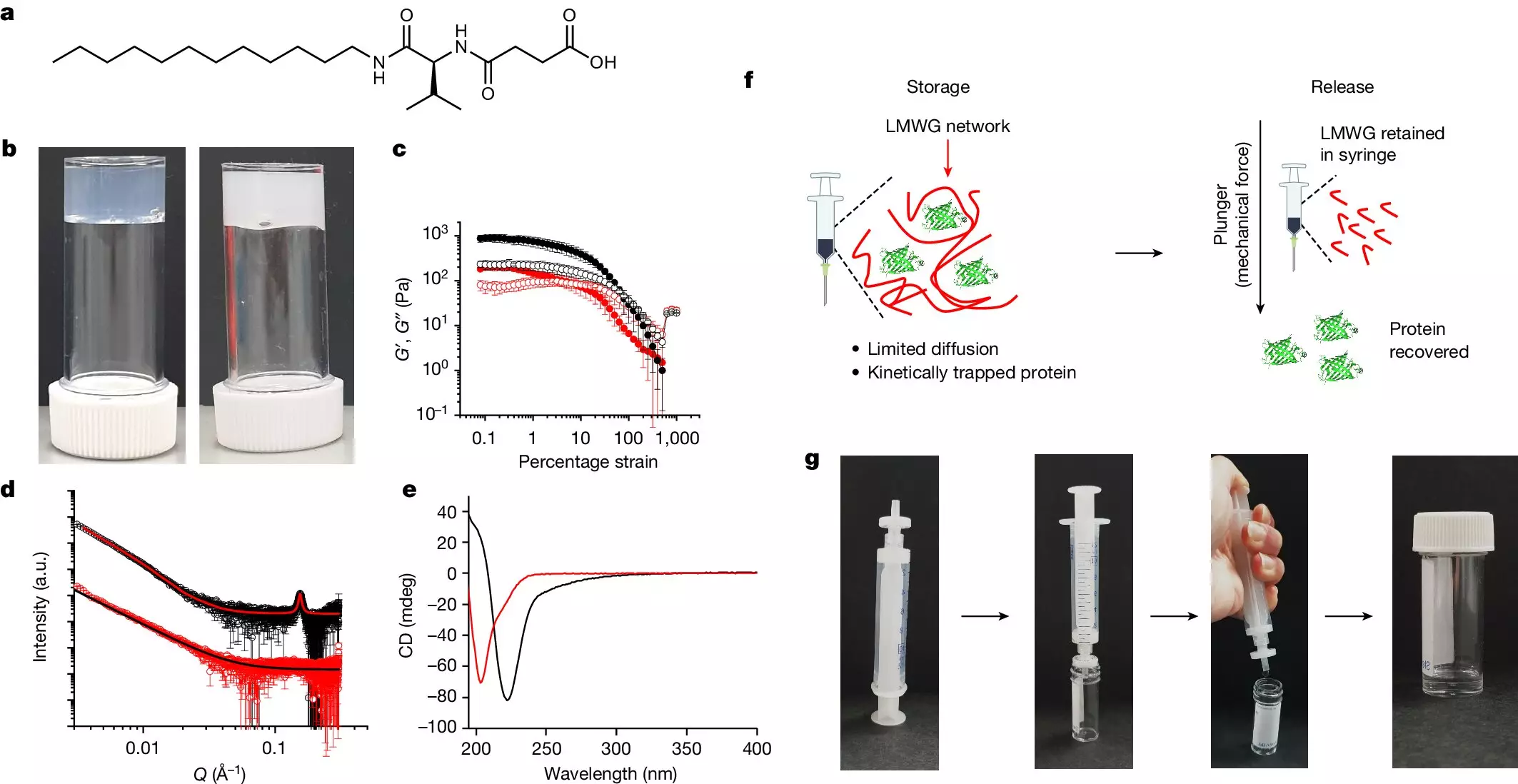In a remarkable innovation that could change the landscape of healthcare, recent research from a collaboration among scientists at the Universities of Manchester, Glasgow, and Warwick has developed a game-changing hydrogel for storing and distributing protein therapeutics. With the potential to eliminate the need for refrigeration, this discovery stands poised to enhance access to critical medical treatments, significantly benefiting regions where cold storage capacities are inadequate. This breakthrough, shared in the prestigious journal *Nature*, shines a light on the pressing need for accessible healthcare solutions in developing countries.
For years, protein therapeutics have served as a cornerstone in treating a multitude of health conditions, including diabetes, cancer, and the emerging obesity epidemic. However, maintaining their efficacy during transport and storage remains a consensus challenge within the pharmaceutical industry. Traditionally, the “cold chain” system — driven by electricity-intensive refrigeration — has been the norm, contributing to logistical barriers, especially in resource-limited regions. The emerging hydrogel presents an innovative approach that could not only simplify distribution but also reduce energy consumption significantly.
The Science Behind the Hydrogel
At the heart of this technological advancement is a low molecular weight gelator (LMWG), which creates a robust three-dimensional network. As proteins are integrated into this hydrogel, they are encapsulated in such a way that they refrain from aggregating or deteriorating — issues that commonly compromise therapeutic effectiveness. This meticulous stabilization method allows proteins to withstand temperatures reaching as high as 50°C while retaining their functional properties.
The hydrogel’s unique design is critical as it combines stiffness with brittleness, enabling the controlled release of the encapsulated proteins. When drawn into a syringe adapted with a specialized filter, the plunger’s pressure disrupts the hydrogel’s network, enabling the protein to be extracted pure and unharmed. This capability allows for practical, real-time medical applications, promoting efficient access to essential therapies without the complications of refrigeration.
Testing Unprecedented Boundaries
The research team conducted rigorous tests to validate the effectiveness of their hydrogel storage solutions, focusing initially on insulin and beta-galactosidase, two vital protein therapeutics. Conventional wisdom dictates that insulin requires strict temperature control, immune to volatility. However, subjected to tests simulating extreme conditions — including high rotation speeds and elevated temperatures — the hydrogel successfully preserved insulin’s full functional capacity. This achievement mirrors the conditions faced during actual transportation, suggesting that protein-based therapies could be shipped without the perpetual anxiety of degradation.
In a striking comparison, the beta-galactosidase enzyme, stored at 50°C for a week, managed to maintain an impressive 97% of its functionality after extraction from the hydrogel. These findings offer a glimpse into a future where temperature fluctuations are no longer an insurmountable hurdle in protein drug distribution.
In a seemingly mundane yet significant test, proteins encased in hydrogel were transported through traditional postal services over two days. Upon arrival, analysis confirmed that the hydrogel effectively inhibited protein aggregation, highlighting its practicality for real-world applications. This may seem like a simple step forward, but in reality, it could pave the way for simplifying logistics in healthcare supply chains globally.
Broader Implications and Future Opportunities
The implications of this research stretch far beyond just drug delivery. By enhancing the stability of protein therapeutics, the hydrogel approach could revolutionize diagnostics and biotechnology, opening doors for more equitable healthcare solutions in underserved regions. Given the seasonal outbreaks of diseases and health emergencies, such advancements can be vital for timely medical responses, potentially saving countless lives.
Furthermore, the research team is actively exploring commercialization of the technology, ensuring that this pioneering work translates into tangible benefits in healthcare. As they navigate opportunities, challenges such as ensuring safety and ease of use will guide their development footprint.
As society collectively grapples with delivering effective therapeutics while minimizing environmental impact, innovations like this hydrogel lay the groundwork for a healthier future—one that prioritizes access and sustainability. It’s an exciting prospect that redefines how we think about the transport, storage, and accessibility of essential protein therapeutics in a world that demands innovation.


Leave a Reply